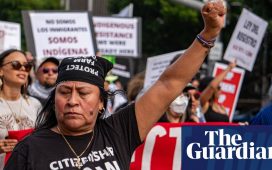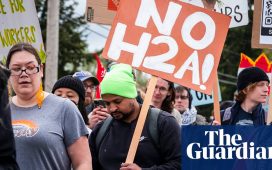Increase Will Help Address the Need for Seasonal Workers and Reduce Irregular Migration
WASHINGTON – Today, the Department of Homeland Security (DHS), in consultation with the Department of Labor (DOL), announced that it expects to make an additional 64,716 H-2B temporary nonagricultural worker visas available for Fiscal Year (FY) 2025, on top of the congressionally mandated 66,000 H-2B visas that are available each fiscal year. These additional H-2B visas represent the maximum permitted under the authority provided by Congress and are identical to the additional temporary visas provided in FY 2024. DHS, in coordination with DOL, has authorized supplemental cap numbers in FY 2017, FY 2018, FY 2019, FY 2021, FY 2022, FY 2023, and FY 2024 in accordance with the time-limited statutory authority granted for each of those fiscal years by Congress.
American businesses in industries such as hospitality and tourism, landscaping, seafood processing, and more turn to seasonal and other temporary workers in the H-2B program to help them meet demand for their goods and services. The supplemental visa allocation will help address the need for seasonal and temporary workers in areas where too few U.S. workers are available, willing and qualified to do the temporary work and address the labor needs of American businesses.
Consistent with prior years, the Department is publicly announcing its plans to make these supplemental visas available early in FY 2025—just as it did in FY2023 and FY2024—to ensure American businesses with workforce needs are able to plan ahead and find the seasonal and other temporary workers they need. At the same time, DHS and DOL have put in place robust protections for American and foreign workers alike, including by ensuring that employers first seek out and recruit American workers for the jobs to be filled, as the H-2B program requires, and that foreign workers hired are not exploited by unscrupulous employers.
“The Department of Homeland Security is committed to further growing our nation’s strong economy,” said Secretary of Homeland Security Alejandro N. Mayorkas. “By maximizing the use of the H-2B visa program, the Department of Homeland Security is helping to ensure the labor needs of American businesses are met, keeping prices down for consumers while strengthening worker protections and deterring irregular migration to the United States.”
The H-2B supplemental rule would include an allocation of 20,000 visas to workers from Guatemala, El Salvador, Honduras, Haiti, Colombia, Ecuador, or Costa Rica and a separate allocation of 44,716 supplemental visas that would be available to returning workers who received an H-2B visa, or were otherwise granted H-2B status, during one of the last three fiscal years. The regulation would allocate the supplemental visas for returning workers between the first half and second half of the fiscal year to account for the need for additional seasonal and other temporary workers over the course of the year, with a portion of the second half allocation reserved to meet the demand for workers during the peak summer season.
The H-2B visa program permits eligible employers to hire noncitizens to perform temporary nonagricultural labor or services in the United States. The employment must be of a temporary nature, such as a one-time occurrence, seasonal need, peakload need, or intermittent need. Employers seeking H-2B workers must take a series of steps to test the U.S. labor market. They must obtain certification from DOL that there are not enough U.S. workers who are able, willing, qualified, and available to perform the temporary work for which they seek a prospective foreign worker, and that employing H-2B workers will not adversely affect the wages and working conditions of similarly employed U.S. workers. The maximum period of stay in H-2B classification is three years. A person who has held H-2B nonimmigrant status for a total of three years must depart and remain outside of the United States for an uninterrupted period of three months before seeking readmission as an H-2B nonimmigrant.
DHS and DOL are committed to protecting H-2B workers from exploitation and abuse, and to ensuring, consistent with the law, that employers do not refuse to hire or appropriately recruit U.S. workers who are able, willing, qualified, and available to perform the temporary work.
Additional details on H-2B program safeguards, as well as eligibility and filing requirements, will be available in the temporary final rule when published and on the USCIS webpage.








